Recently I joined my local mycological club and yesterday was my first opportunity to join them on a foray. There was a huge turnout (perhaps in part due to the recent Netflix special 'Fantastic Fungi') and the weather was gorgeous. We even had two other new members carpool with us. We didn't know what to expect.
I learned that the way forays work is that the group meets at a specified location and time, usually with a guide from the property or a guest expert. There is a short discussion of the trails and where to look, and proper mushroom excavation technique (many need the 'root' or volva intact to identify). Then the group sets off, and like a mycelium, spreads out through the woods into small clusters or individuals going their own way. This method was to our liking, and our new carpool friends soon ventured out on their own as well. After 1.5hours the group returns with their findings and the club discusses our haul for the day.
Let the Hunt Begin!
Right off the bat, we spot an Amanita and pop it in our basket. We couldn't walk 5 feet without stumbling into a mushroom. They were so abundant and diverse, it really was amazing.


Next up, was a stinkhorn (genus Phallus). Little did we know that we should have left this one for last! Whoever named these bastards was not kidding because it stank in our basket the whole time. I figured it was almost a rite of passage, "Hey look at the newbies carrying around a stinkhorn!".
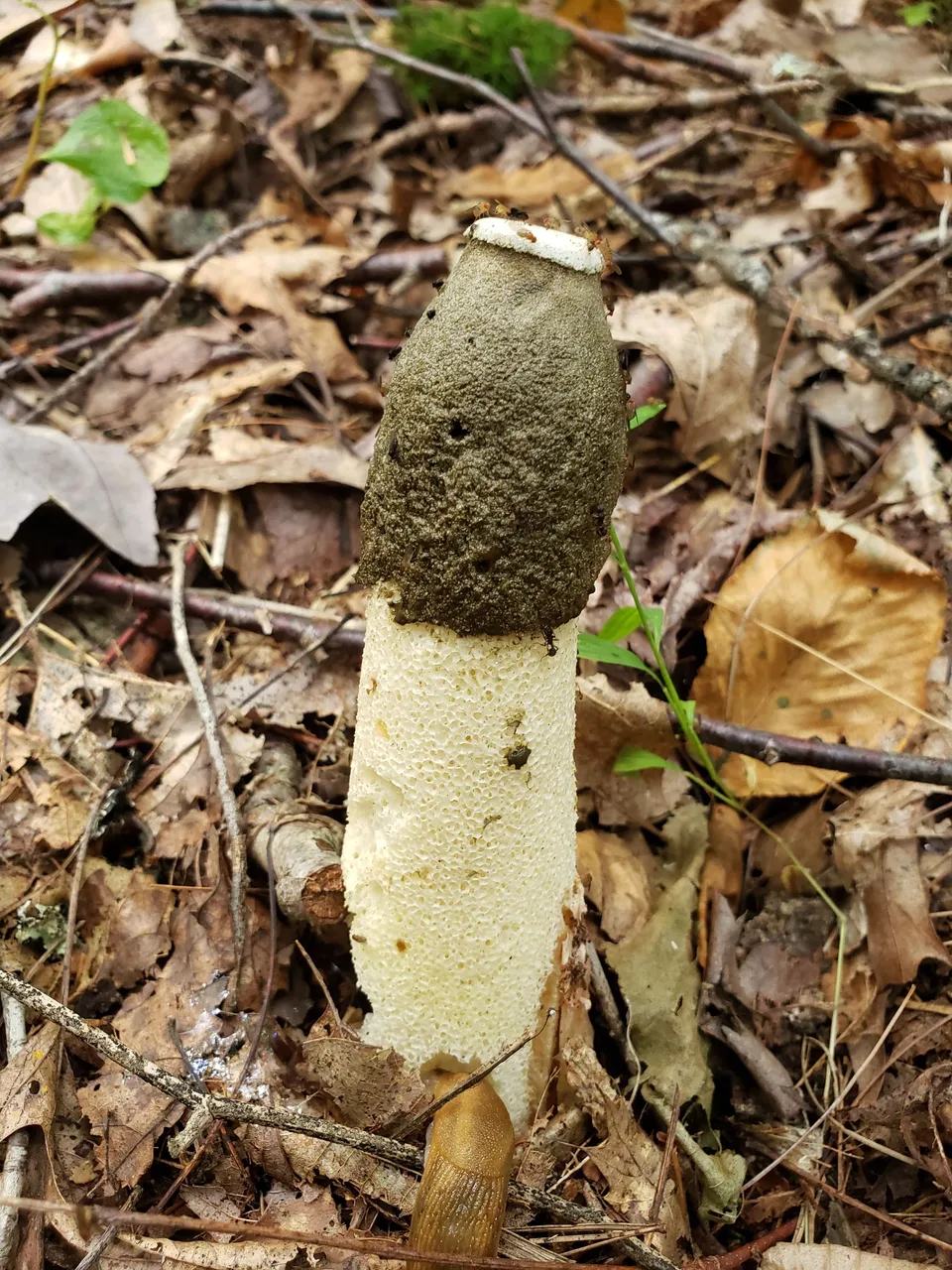
While we were excavating it, some American Carrion Beetles (Necrophila americana) escaped from the top of the tube, adding to the gross-out factor. Also, very cool and it was a new beetle species for my list! The stinkhorn attracts insects with its rotten smell and relies on them to spread its spores after they touch the spore surface (gray/brown mass at the top). Below, you can see the beetle poking its head out.
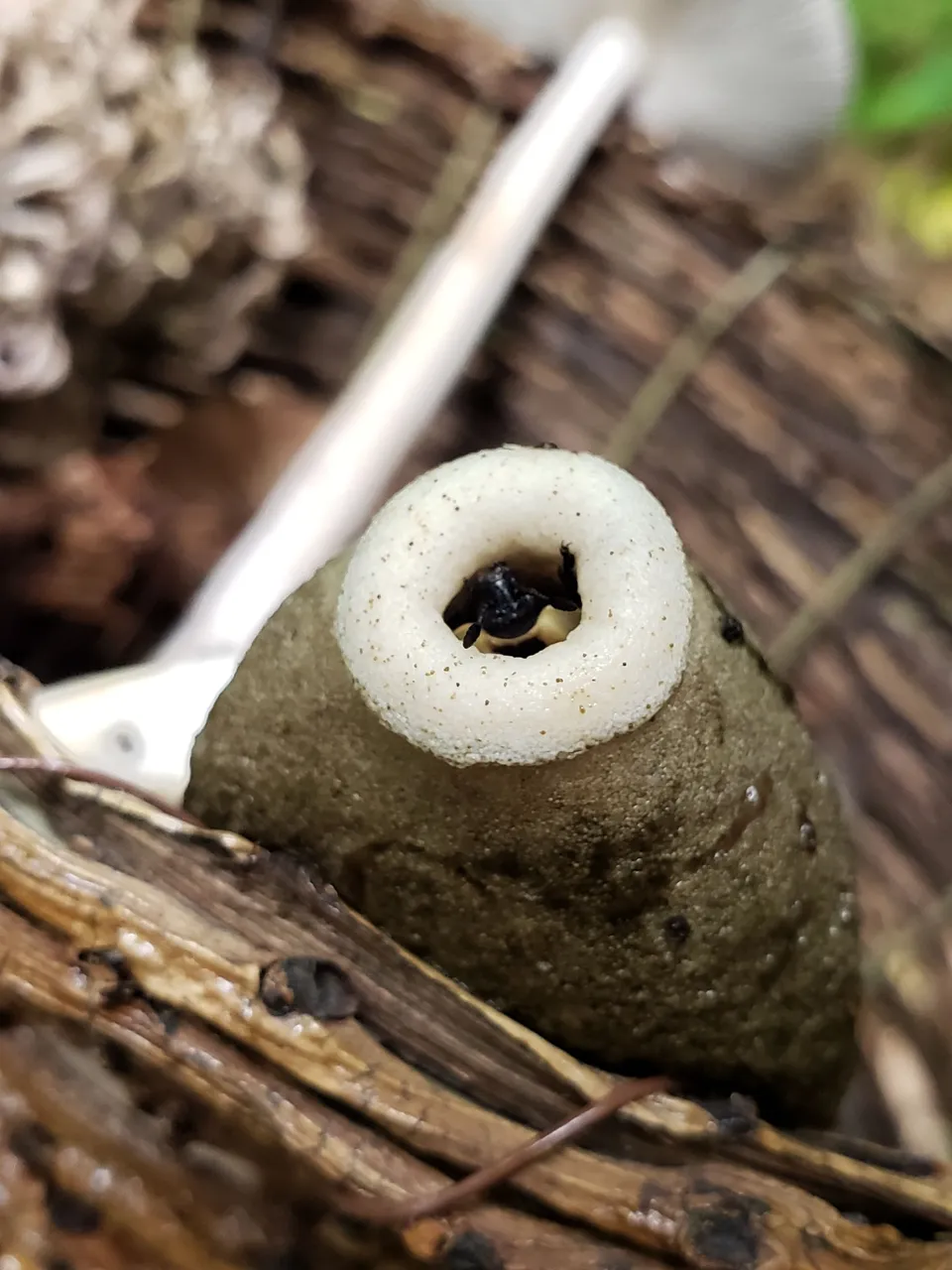
This particular species is Ravenel's Stinkhorn (Phallus ravenelii). We were the only people to bring back a stinkhorn which we took pride in. A small consolation prize for dealing with the smell >.<
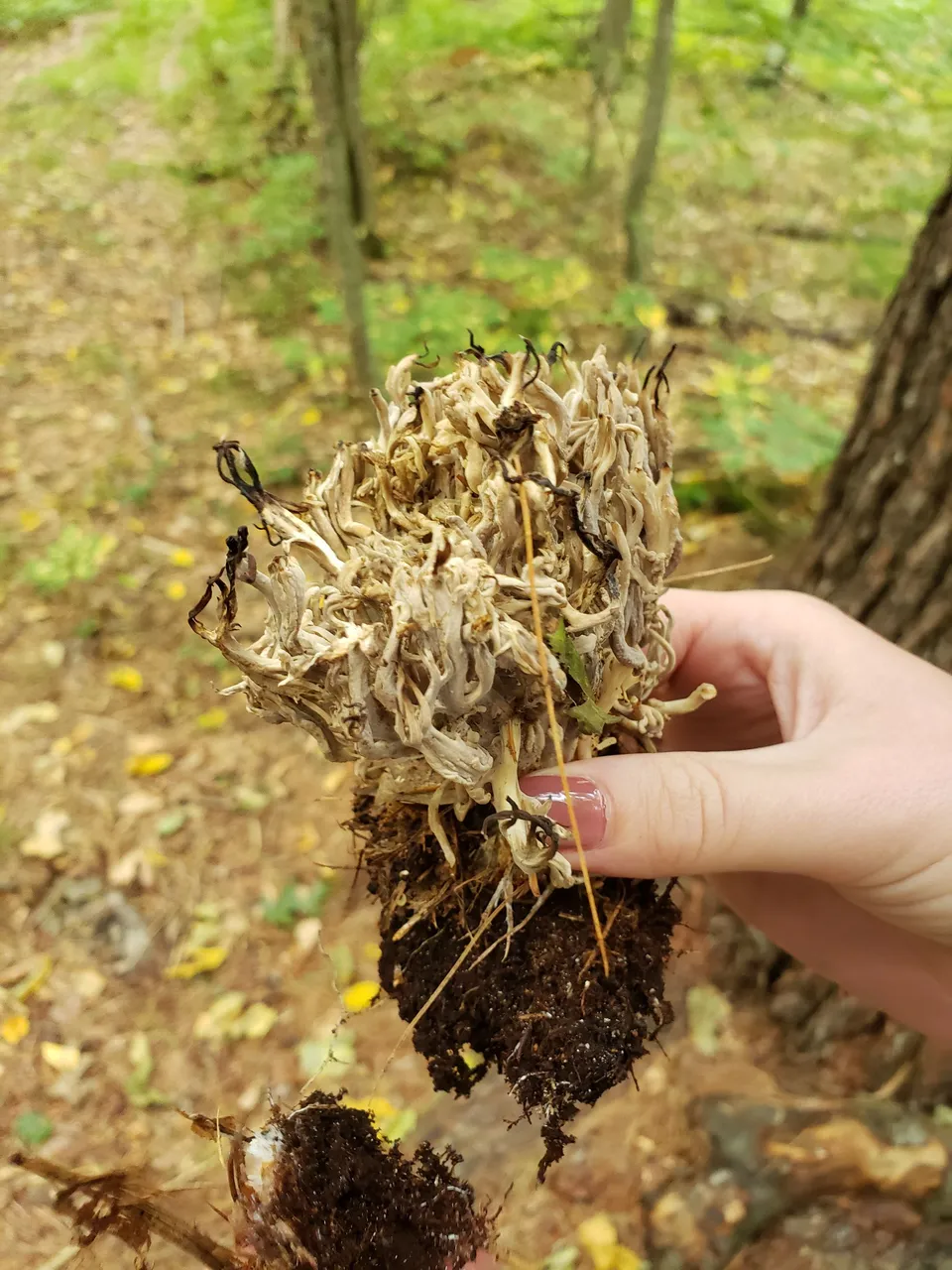

Gray Coral Fungi (Clavulina cinerea) and Old-Man-of-the-Woods (Strobilomyces strobilaceus) were other early additions to our basket.
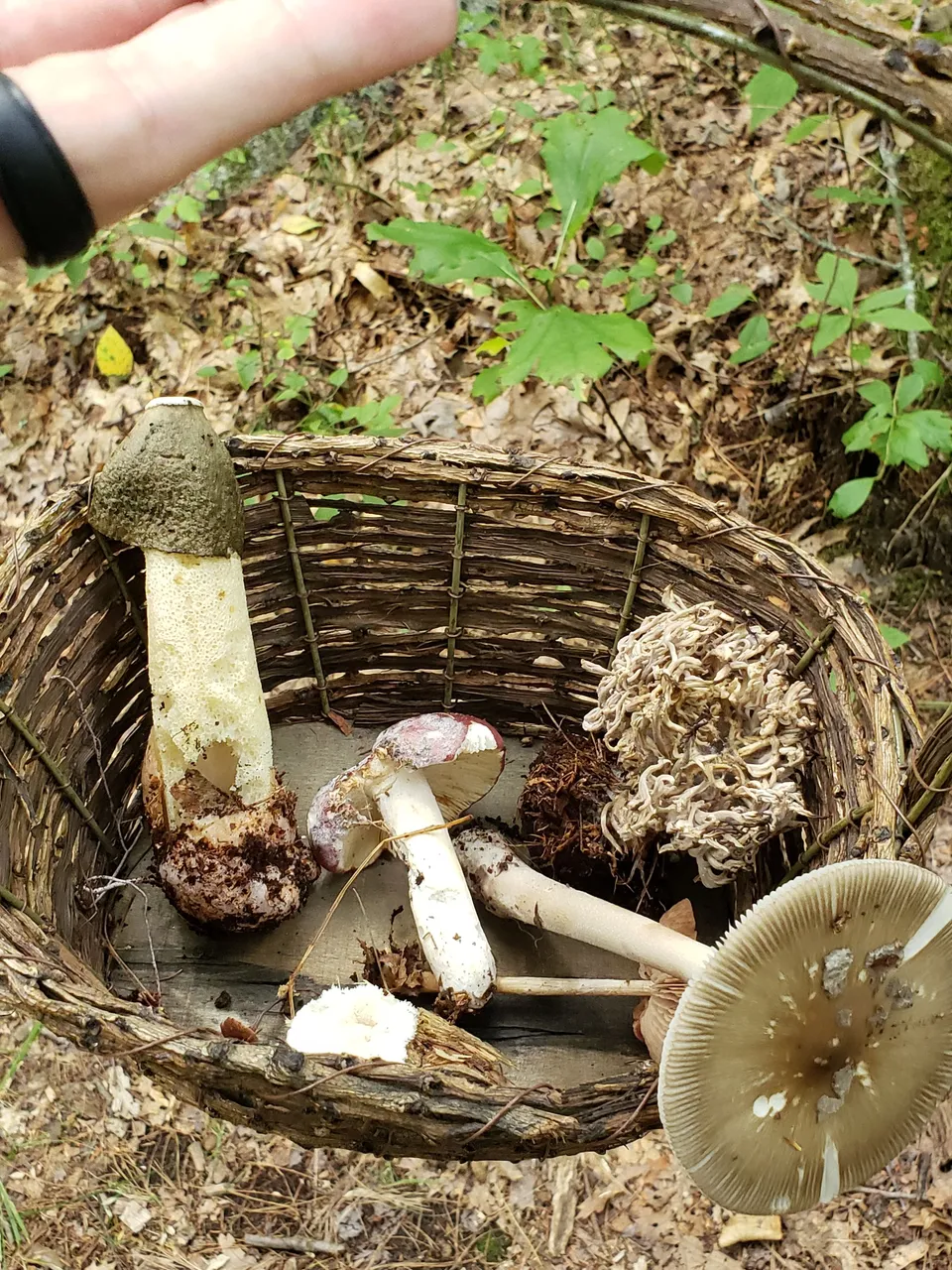
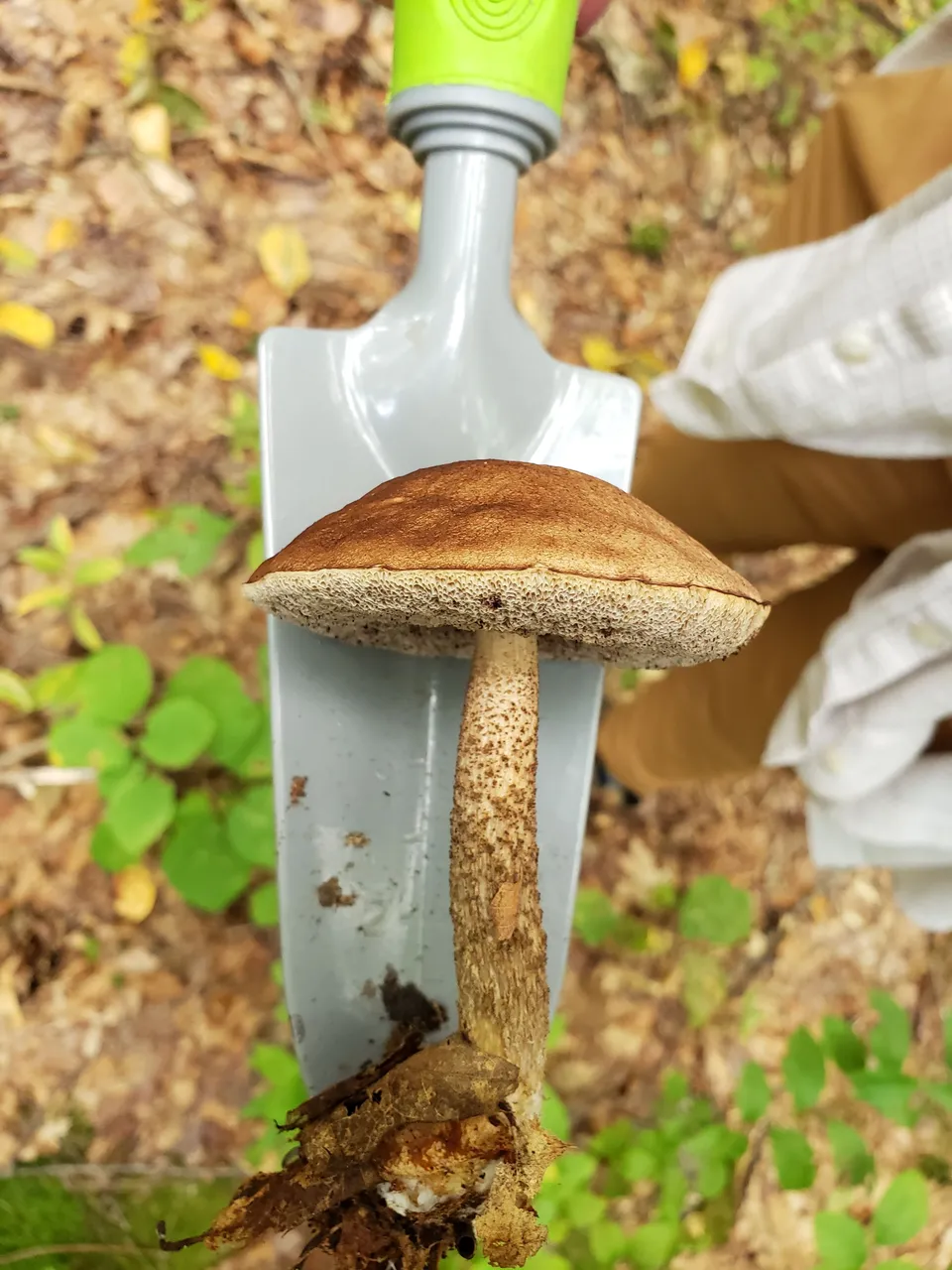

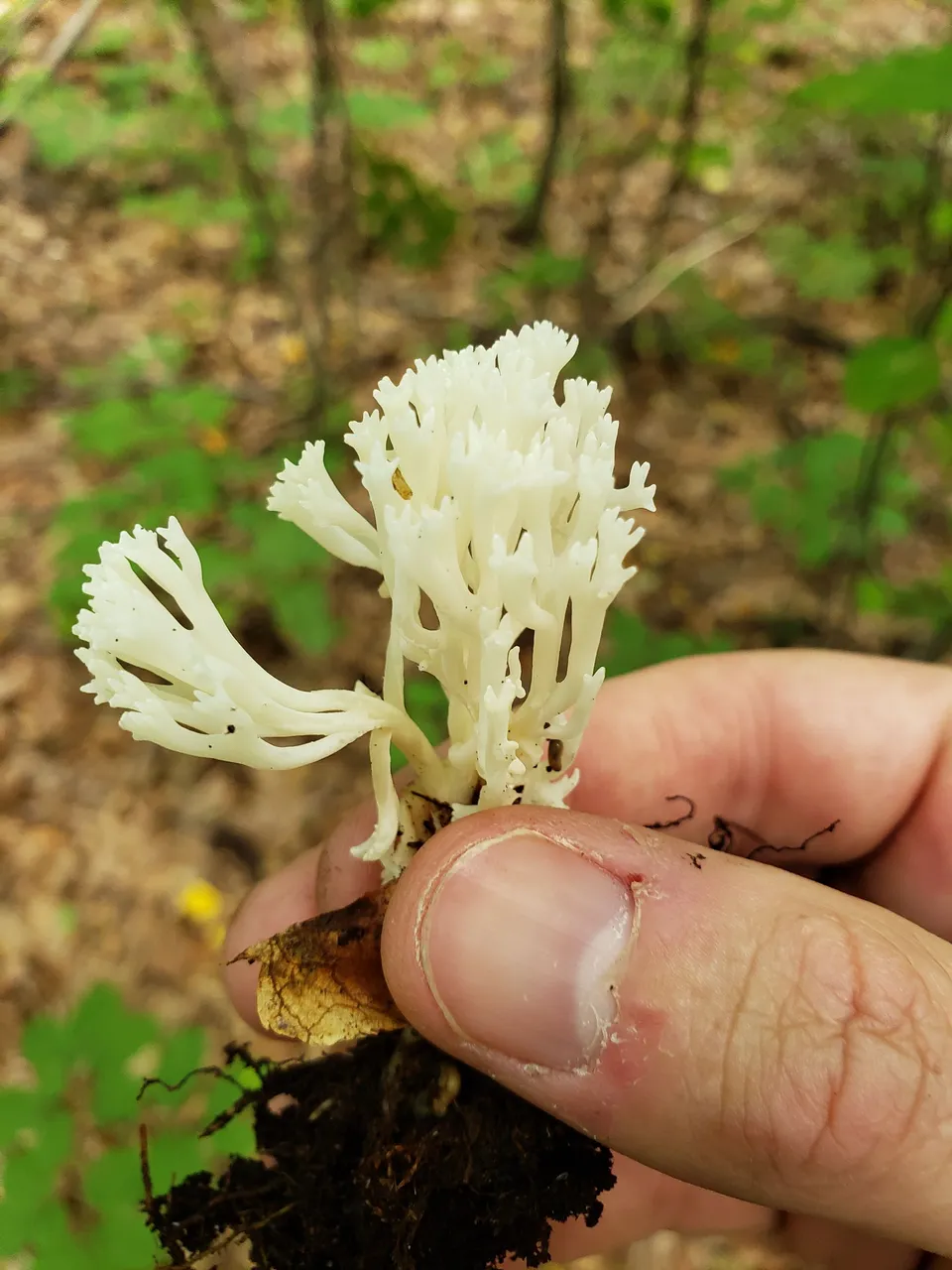




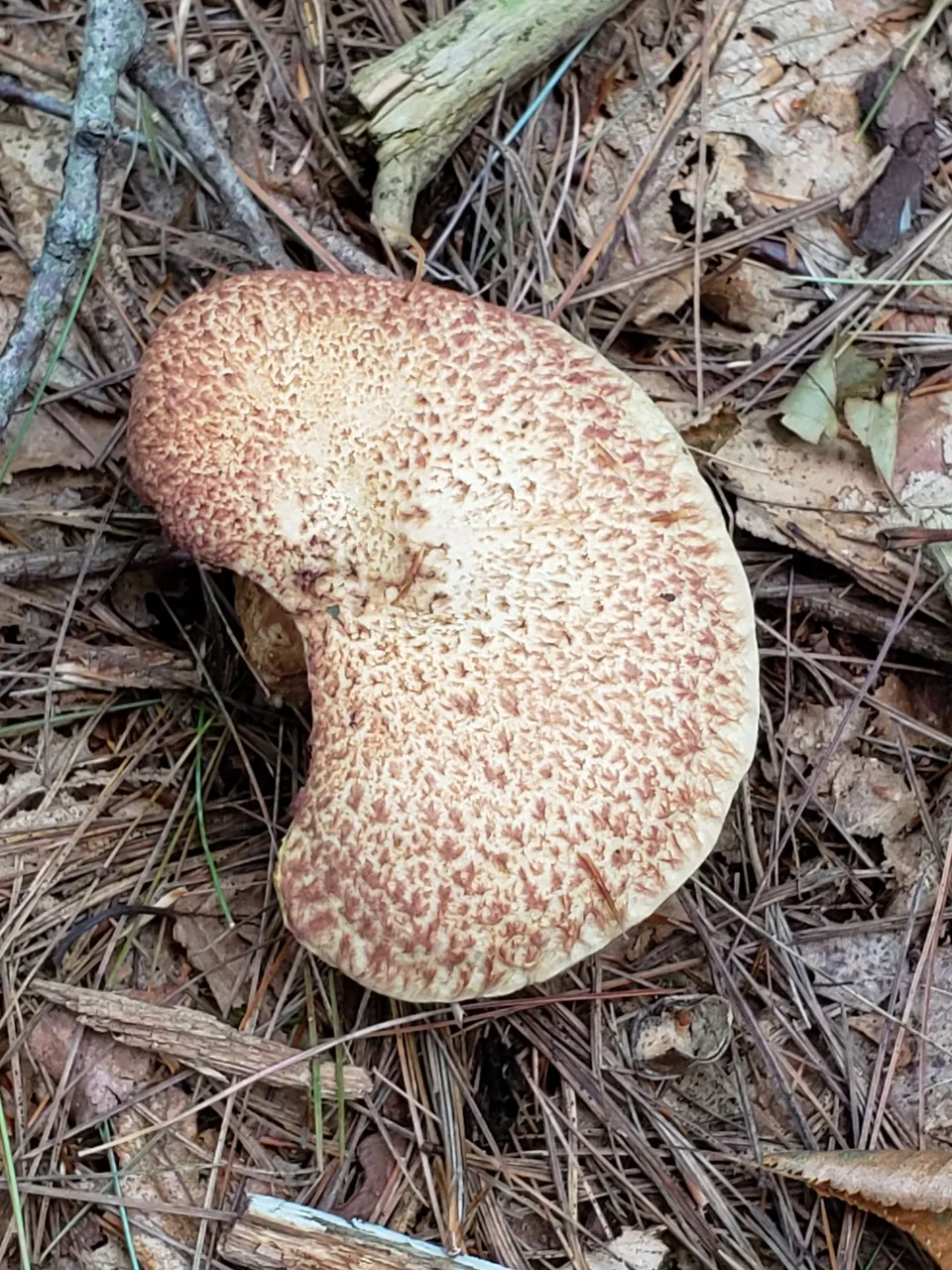
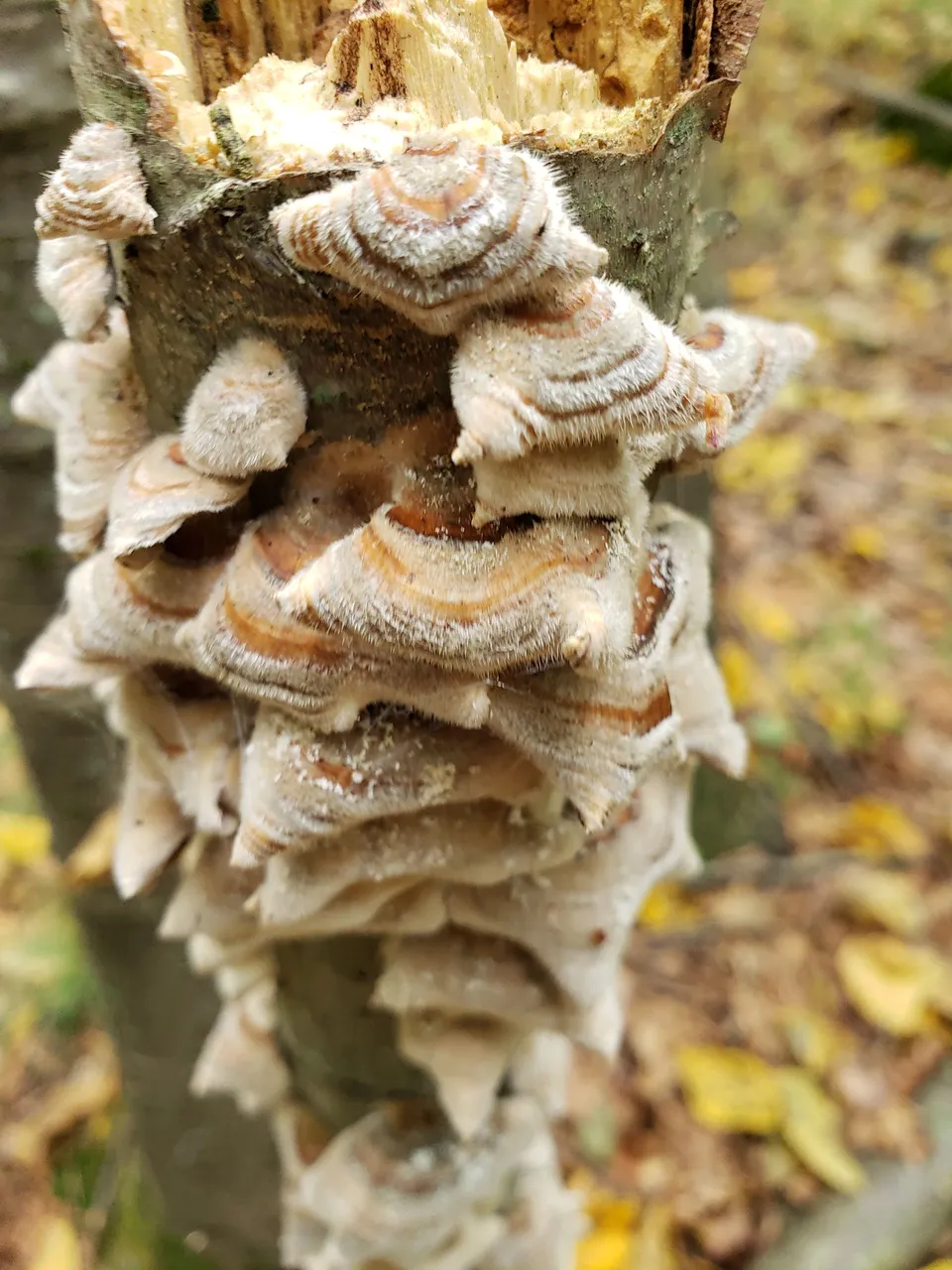
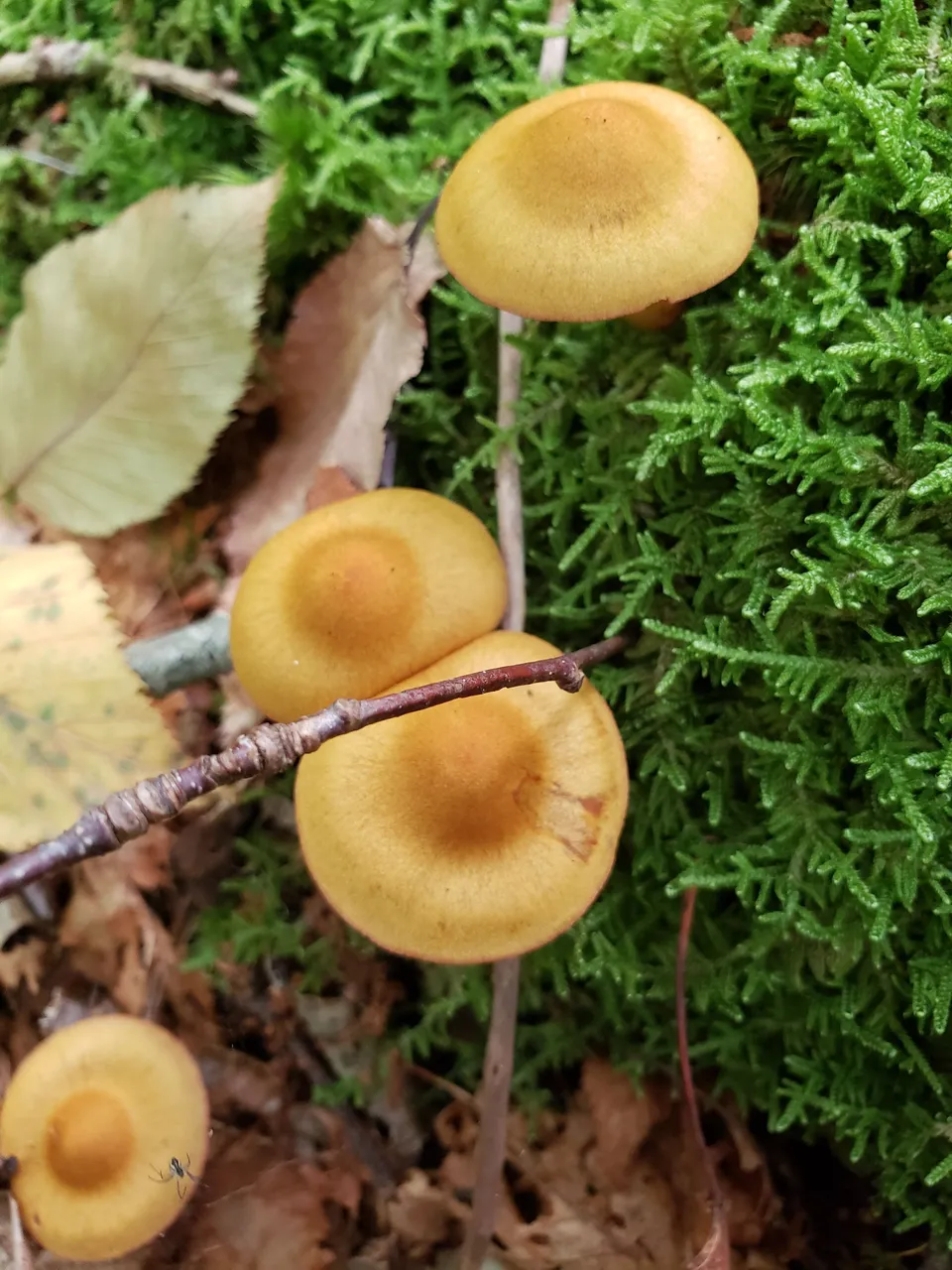

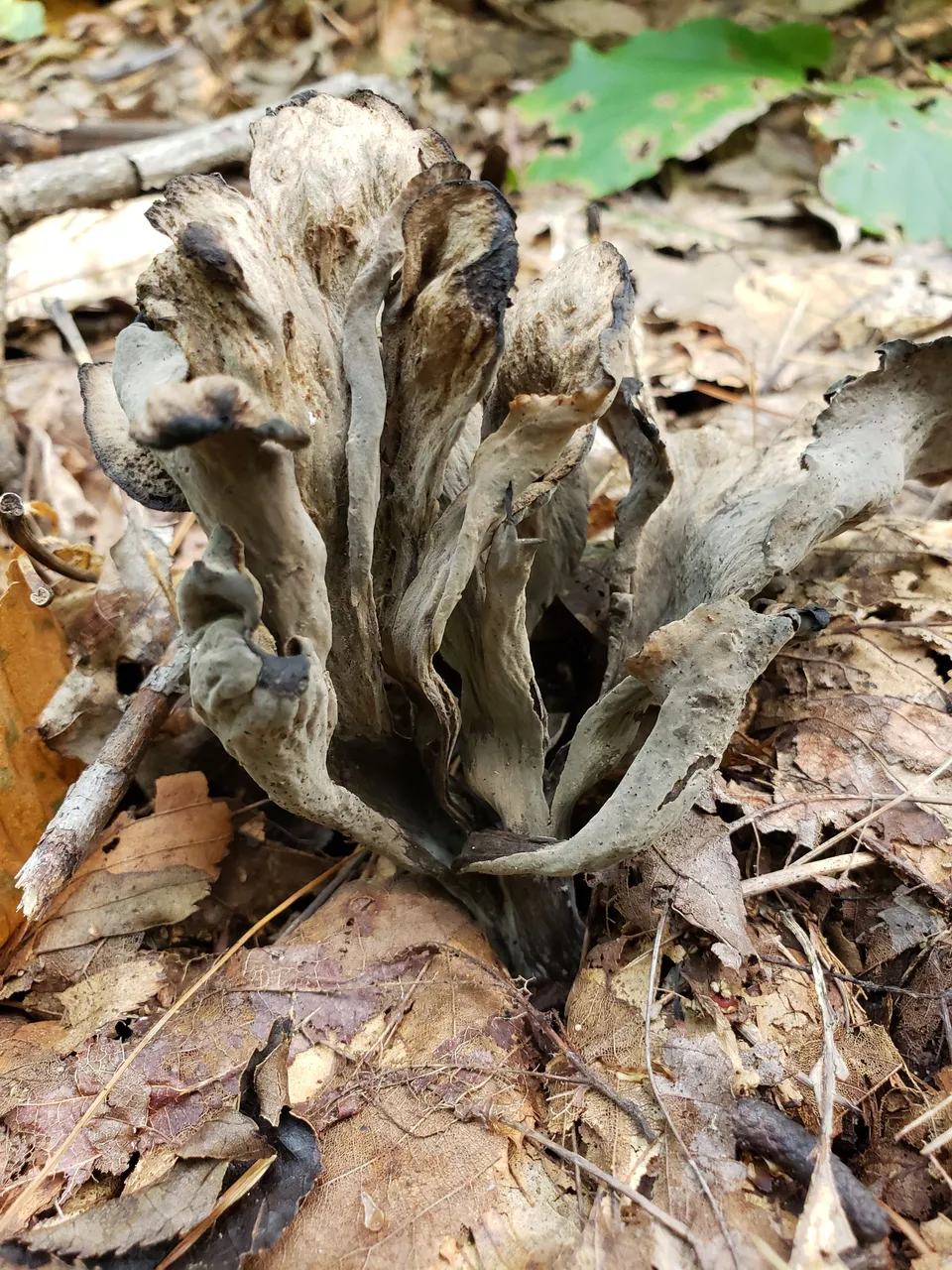
The Table
At the end of the 1.5 hours, we made our way back to the club's tables with a full basket (sorry forgot to snap a shot). The table was arranged by type of fungi, Polypores, Gilled Mushrooms, Boletes, Coral Fungi and other strange/small fungi.
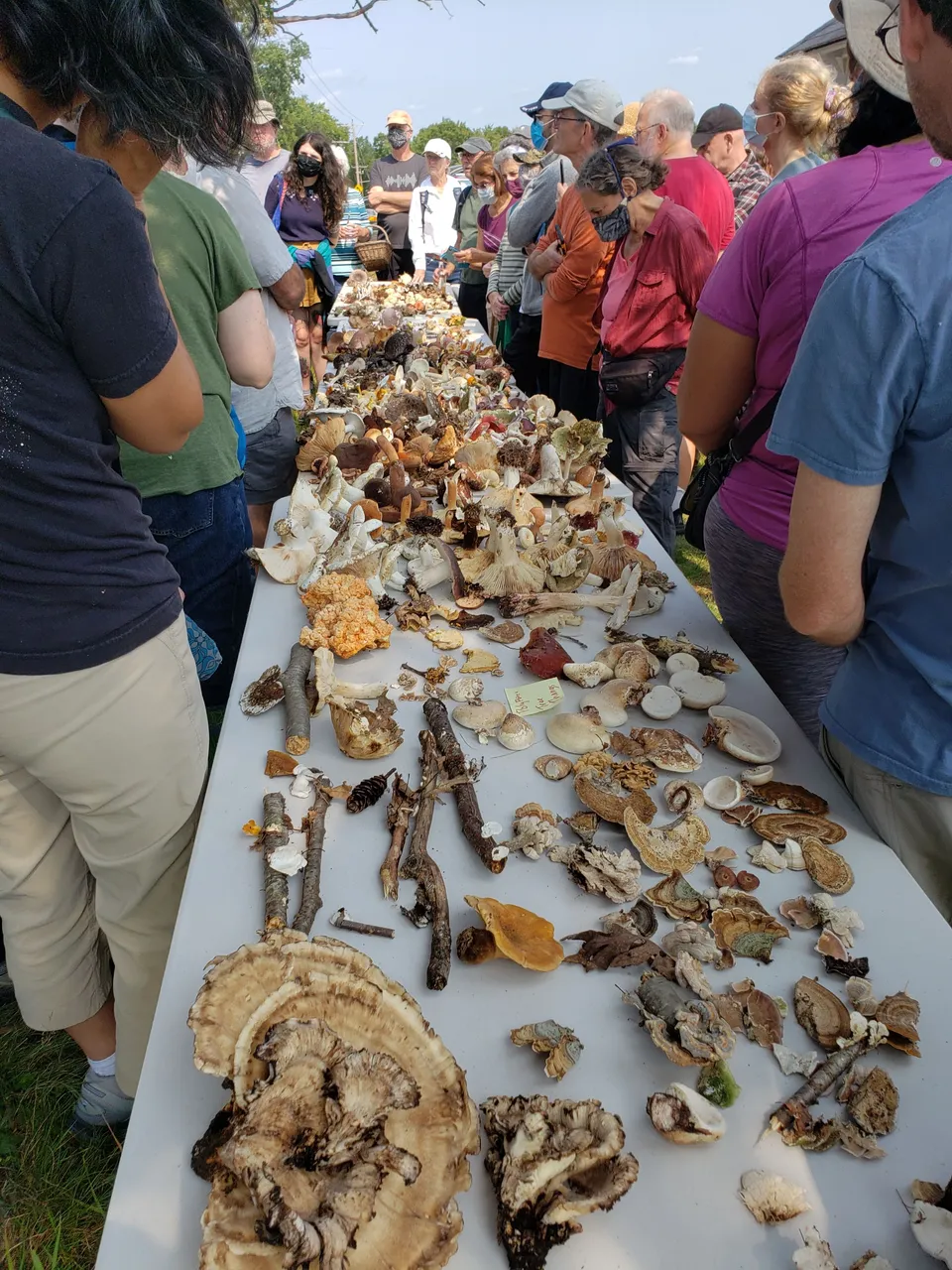
The trip leader began to explain the major differences between the groups and then answer any questions from the crowd.

One thing I'll know for next time, is to ask questions on my specific specimens before putting them on the table. I couldn't relocate them in the sea of fungi afterwards!
And I'll grab more photos of the tables to show you all in more detail :)
